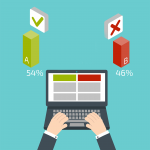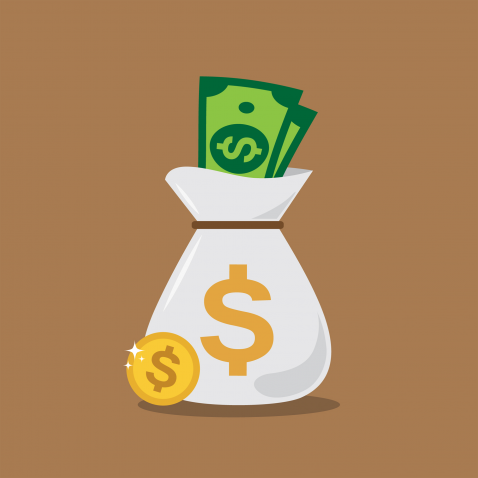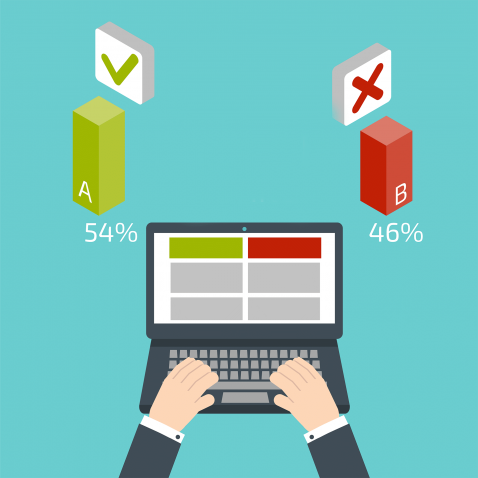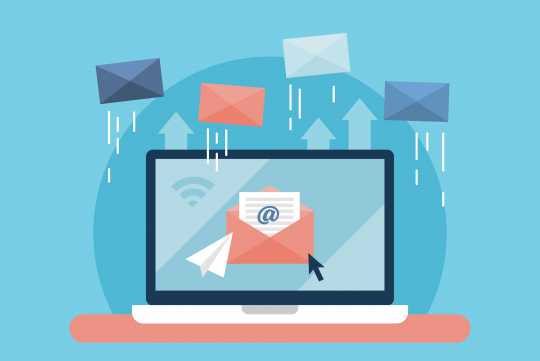
Tip 1. Avoid Purchased Lists

Tip 2. Split Test to Improve Results

Tip 3. Craft a Well Written Welcome Email

Tip 4. Stay Clear of Gmail's Promotions Tab

Tip 5. Maximize Engagement Through List Segmenting
Tip 1. Avoid Purchased Lists
For me, if you take anything away from this list, not buying a pre-made contact list should be one of the most important things to remember.
Not only do you risk being uncompliant with GDPR or CAN-SPAM, but purchased lists are typically low quality – stopping email campaigns dead.

Building a natural email subscriber list through organic methods such as incentivized opt-in campaigns, weekly newsletters, etc., is by far the best way to gather people’s details. Not only are they consenting to be contacted, but they are highly targeted, relevant prospects that will boost your success in further email marketing campaigns.
Lists that have been purchased from a third party contain low-quality prospects, whose data may have been gathered through illegal means. Not only that, but the information you receive may not even be correct, containing wrong names or emails that no longer exist.
Building an email subscriber list can be hard, trust me, and while buying a list and having access to thousands of prospects instantly sounds enticing – it is almost always more hassle than it is worth.
Consider this, for every email that you contact that was gathered through illegal means; you are liable for up to $16,000 in fines – per email.
Even if it doesn’t get that far, if too many of your emails are marked as spam, you can face detrimental treatment from your email service provider (the company sending out your emails.)
Account closures, fines, and legal action are all possible avenues your email service provider may wish to explore, depending on the severity of your actions. Several notable providers state that merely buying an email subscriber list qualifies as a breach of their TOS agreement.
That’s before we even consider the potential damage to your or your business’s reputation that can result from poor quality email lists. What if a potential customer or client were to Google your business name, only to find several results from people disgruntled that you have been contacting them with unsolicited spam – it’s not a good look.
Buying email lists is never worth the risk.
Tip 2. Split Test to Improve Results
A/B, or split testing, is the best way to optimize and improve any marketing campaign.
This sentiment remains true with email marketing campaigns.
Testing subject lines, calls-to-action, content copy, CTR, and any other variable that might be contained within your emails.

Split testing gives us the ability to optimize and improve our engagement metrics, and is a never-ending process. The good thing is, there is a never-ending list of variables you can test, optimize, and retest throughout the length of your email marketing campaigns.
The first step to any great outbound email marketing campaign is to have your audience open your correspondence in the first place. Naturally, this leads us to start testing our subject lines.
Email subject lines should evoke a slight emotional response from your audience, curiosity, concern, joy, or excitement can all lead to an improved open rate.
One of the easiest ways to get a quick open rate win is to personalize your emails by including the recipient’s name within the subject line.
Once your audience is opening your emails, you need to convince them with well crafted, relevant content. Using templates can be useful here, allowing you to test multiple layouts for minimal effort.
While that is all good, the template you use still needs to be filled with persuasive copy, relevant for your audience.
Overly ‘salesy’ content might put off potential customers, especially if your email is packed with CTA buttons to ‘shop now’ and excessive product images. Your customers are likely to be in the investigation stage of the buying cycle, investigative language may work more in your favor – ‘learn more,’ ‘see how,’ etc.
Your copy should direct your audience to your CTA, convincing them they should engage with it along the way. Your call-to-action should be the final push.
Tip 3. Craft a Well Written Welcome Email
Out of all the emails you send, your welcome email is quite probably the most important of them all.
They are absolutely vital to get correct as they set the tone for what your user base can expect from your going forward.

Welcome emails must always be sent out immediately after a user or customer has signed up to your subscriber list, while you are still occupying their headspace.
Welcome emails should be personal where applicable, addressing the recipient by name – addressing your user as friends, subscribers, etc., make your correspondence seem impersonal and reduces engagement.
You should also avoid sending from a ‘no-reply’ email address for numerous reasons. Firstly, to comply with the CAN-SPAM act (if marketing within the US), you are subject to a series of rules to prevent fraudulent and spammy email outreach.
One rule enforced is the use of ‘no-reply’ or similar variants as the email’s sender name. Using a no-reply email address prevents your user base from contacting you, or even opting out of future emails – a right that is protected under CAN-SPAM.
Instead, you should have your emails come from a named sender (either your name or a chosen pseudonym,) not only does this keep you compliant with the law, but emails from a designated sender also offer more trust & are more likely to receive engagement.
Next, you should inform users of what they can expect from you in the coming weeks, start by letting them known what type of content they can expect, how often to expect I, and how they can contact you if need be.
Then, crucially, you need to meet the expectations you have set out.
Your welcome email is also a fantastic opportunity to gather more data on your subscribers for segmenting.
Ask people why they signed up, reasons for making a purchase & what they may be interested in seeing more of.
Tip 4. Stay Clear of Gmail's Promotions Tab
Not so long back, Gmail decided to sort emails via various tabs for Social, Promotions, Primary, and so forth.
Unfortunately for us, this makes emails found within any tab other than the Primary tab much easier to ignore.

Gmail scans the content of your email when deciding which tab you deserve to appear in. The number of links, “spammy” language, how many images are contained, and the level of previous engagement when deciding how to allocate your content.
This is why it is important to split test email marketing, trying numerous variations in the number of links, images, and subject lines, allowing you to optimize your campaigns for the primary tab going forward.
Not only is the content within your email considered, but engagement is also a significant factor in appearing in the correct tab. You can boost engagement, asking your audience for feedback and, importantly, making feedback easy to provide – either directly or indirectly.
Your welcome email provides the perfect opportunity for this, the earlier you can start appearing within the primary tab, the more successful your email marketing campaigns will be.
Alternatively, if you don’t have the capacity to assess user’s feedback, you can add a request to the bottom of your emails – suggesting that your audience add your email address to their address book as a trusted source.
Tip 5. Maximize Engagement Through List Segmenting
Segmenting your email list by demographic, interests, or other variables is a great way to boost your engagement by only sending emails that are relatable to the end-user.
If, for instance, you run a musical instrument store – it would be useful to segment your subscribers by which instrument they play—allowing you to create highly targeted, relevant email campaigns for your audience.

Research shows that segmented campaigns can help drive gains of up to 760% in revenue, but how do you segment your subscribers?
In the first instance, once a user or customer has signed up for a service or bought a product, you can get them to choose their preference for the type of content they are happy to receive in the future.
There are a few other options available to you for segmentation, including:
- Asking for preferences within your welcome email.
- Having subscribers engage with a user profile.
- Ask current subscribers to update their preferences.
- Base your segmentation on previous data – purchases made, etc.
For instance, it is possible to segment your audience through a single click by providing tracked links that inform you of their choice. For instance:
Do you play;
Violin
Guitar
Piano
Etc.
Once a user has clicked their preference, you can segment their details into the correct category for future marketing.
Summary
I hope you have found these tips helpful; I employ them daily as part of my email marketing best practices to boost engagement and conversions.
Have you found success with your email marketing? If so, let me know what you have found worked best for you.
At Affiliate Ghost, I am always looking to deliver new, relatable affiliate marketing content to my users. If there is anything you are interested in seeing or questions you would like answered – don’t hesitate to contact me, and I will do my best to include them in future posts.
Share the Love
If you found this post useful, please let others know about it by sharing it.
